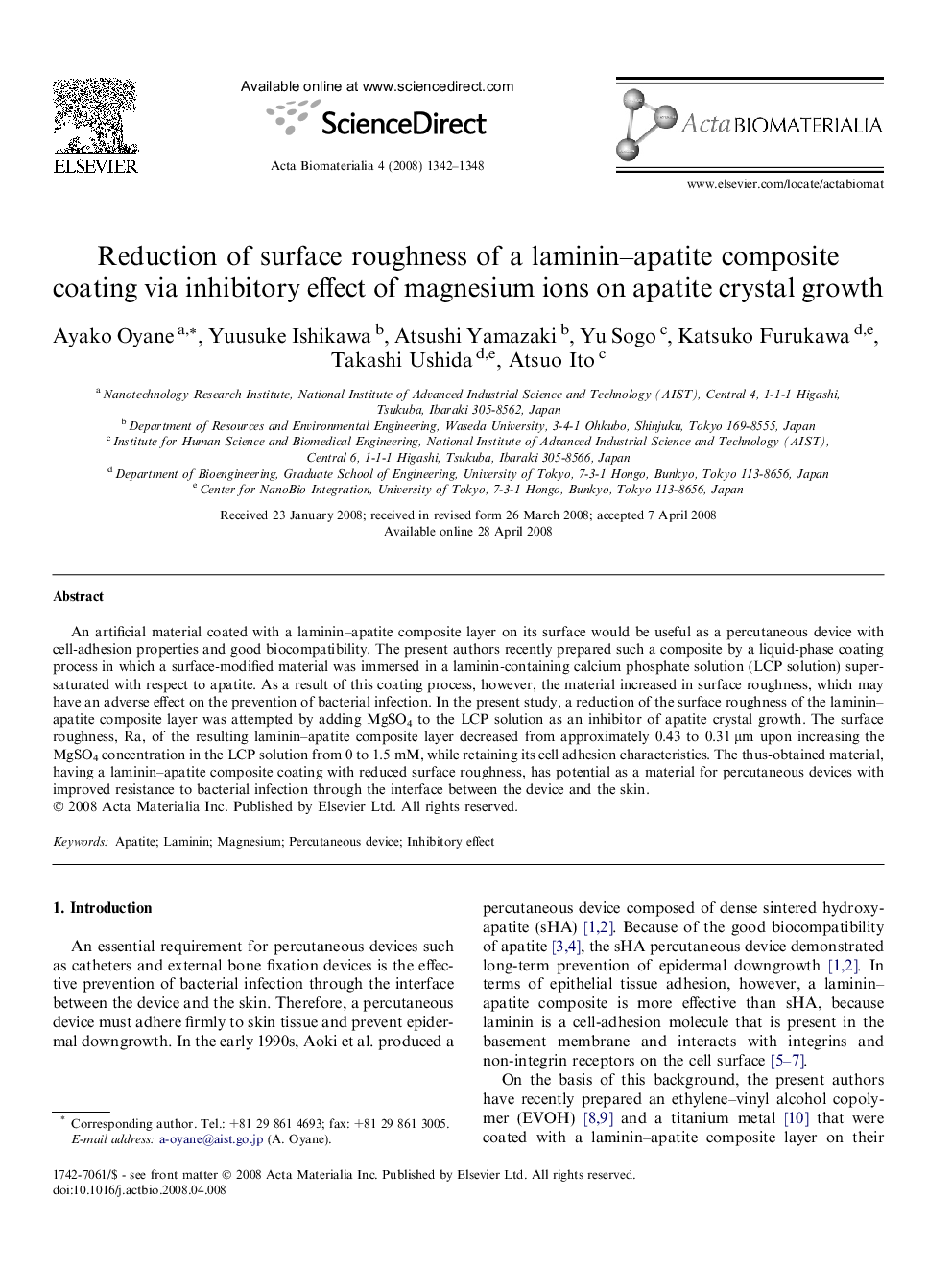| Article ID | Journal | Published Year | Pages | File Type |
|---|---|---|---|---|
| 1566 | Acta Biomaterialia | 2008 | 7 Pages |
An artificial material coated with a laminin–apatite composite layer on its surface would be useful as a percutaneous device with cell-adhesion properties and good biocompatibility. The present authors recently prepared such a composite by a liquid-phase coating process in which a surface-modified material was immersed in a laminin-containing calcium phosphate solution (LCP solution) supersaturated with respect to apatite. As a result of this coating process, however, the material increased in surface roughness, which may have an adverse effect on the prevention of bacterial infection. In the present study, a reduction of the surface roughness of the laminin–apatite composite layer was attempted by adding MgSO4 to the LCP solution as an inhibitor of apatite crystal growth. The surface roughness, Ra, of the resulting laminin–apatite composite layer decreased from approximately 0.43 to 0.31 μm upon increasing the MgSO4 concentration in the LCP solution from 0 to 1.5 mM, while retaining its cell adhesion characteristics. The thus-obtained material, having a laminin–apatite composite coating with reduced surface roughness, has potential as a material for percutaneous devices with improved resistance to bacterial infection through the interface between the device and the skin.
